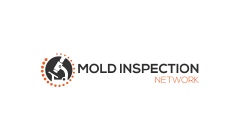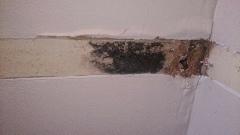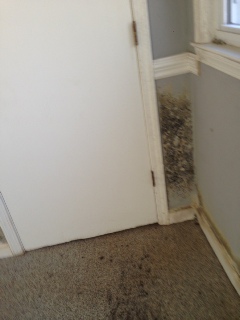

Copyright © Mold Inspection Network 2015-

Mold Inspection Network
Protect Your Home And Family Today

Is Your Home Safe?
864-


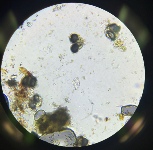
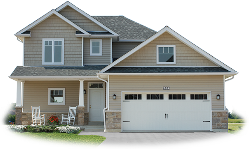
 Get A Free Consultation NOW
Get A Free Consultation NOW



Mold Inspection Network
655H Fairview Rd #274 Simpsonville, SC 29680
844-
Learn More About Mold Testing
Molds are single (yeasts) or multicellular organisms that belong to the fungi kingdom. Molds can be viewed microscopically (spores, hyphal fragments) or macroscopically (mushrooms, slime molds). They are ubiquitous to most of our environments, meaning they can grow pretty much anywhere. They require two things to grow; water and a food source (building materials, decaying plants). Molds use water to soften the food source so that they can release an enzyme that will break down the material to allow it to be absorbed. Molds play a crucial part in decomposition, without them forests would be filled with piles of dead trees and leaves. You can think of it as a worldwide cleaning crew. Molds are also used in pharmaceuticals and other medical research.
What is mold?

Why is mold dangerous?
Since molds help with the decomposition of plants and cellulose based material (walls, floors) this means that they literally eat the substance that they are growing on. They use the material to complete a metabolic process and at the end of this process is waste. This waste is sometimes referred to as mycotoxins. These toxins can be harmful if there is enough exposure. Molds also cause problems all by themselves. There are many genre that are classified as allergens. They can cause: headaches, nose bleeds, asthma, and skin/eye irritation. In severe exposure certain species can also lead to infection. Special consideration should also be given to individuals with weak or compromised immune systems. For example: children, elderly, and persons with HIV and/or other immune disorders. This group of people are more susceptible to being harmed by mold exposure.
Where and how does it grow?
Molds can grow in almost any environment provided that they have water and a food source, both of which are abundant in Greenville SC and Spartanburg SC. Most commonly they will be found growing in soil, dead plants, and on wet building materials. Molds grow using a unique root/seed like system called hyphae (root) and spores (seeds). Spores are spread out like seeds looking for a source of nutrients. Once it finds an acceptable surface to grow on the hyphae branches out like roots and begin decaying that material. It will consume all of the material until either the material is gone or the material becomes dry. At this point, if the conditions are right, it will begin to sporulate. You can think of this process as a tree releasing seeds. These Spores are designed to be released into the air where they will float through the air in hopes of finding another suitable home. The process continues like this in a loop.
Black Mold?
Black mold is a taboo word in the industry of indoor air quality. It was tabbed by the media and commonly refers to stachybotrys chatarum. The term is used to describe the darkish black characteristic that stachybotrys has. This is not a scientific term because many molds can be black depending on what type of material they are consuming. In the late 90’s stachybotrys was initially linked to the death of an infant in Cleveland and the term black mold took off. Later, medical experts have stated they don’t believe stachybotrys was the cause of the infant’s death. The stigma surrounding the term didn’t go away. This term is mostly used as a scare tactic to incite fear. Some companies use this fear to help them sell services. Be wary of websites or companies that promote black mold testing.
Air testing vs. Surface testing
Air testing will give you a measurable result that can be compared to a control sample that we take outside your home. Air tests should be taken in areas of concern and also areas that you spend the most of amount of your time. The results will tell you the amount of mold spores per square meter of air. Once we have a few inside tests we can measure them against the outside test to see if there are any spikes in the data. The tests are taken using calibrated pumps that collect air from your home into small air canisters or cassettes. These samples are sent to the lab where they physically mount the samples onto slides and count the mold spores under the microscope.
Unlike Air samples, surface samples will not produce measurable results. Surface samples will only tell us if the sample is mold or not and what type. These tests are good for rapidly identifying unknown stains or discolored surfaces. The lab will provide some quantification but there will be no control sample to compare it to.
Expectations (limits of testing)
Just like with every service there are limits to what we can accomplish with testing. It is not an exact science because there are so many changing variables that can affect testing such as: weather, time of day, activity in room, humidity, placement of equipment, and contamination. All these variables will affect the accuracy of your tests. We will take all of this information into consideration while testing and use this data to help us interpret the results. Sampling cannot be used as the “end all be all” when it comes to determining issues in your home or office. It is simply a tool to aid the visual inspection.
Why are visual inspections so important?
Since the testing is only one of the tools we use, we rely heavily on the visual inspection. There are some situations where testing simply cannot detect mold. If a colony of mold is very damp the spores will be too dense (heavy) to float in the air. This colony would not show up at all on an air test. However, a visual inspection would find it and allow us to do a surface sample. The visual inspection also helps us find the source of the mold like roof leaks, water damage etc. Finding the source will allow us to help you form a plan to remediate the mold.
Cleaning mold with bleach?
You can assume that bleach would kill mold as it would kill most organisms. The problem with cleaning or killing mold with bleach or any other cleaner is that even though you have visually cleaned the surface, you have not fixed the underlying problem that allowed the mold to grow in the first place. We use root cause analysis to find these issues. Without finding the cause of the mold, cleaning it will only make it go away for a short time. The problem will come back again and again. This can lead to further damage to your home and leave you exposed to mold for longer than necessary.
